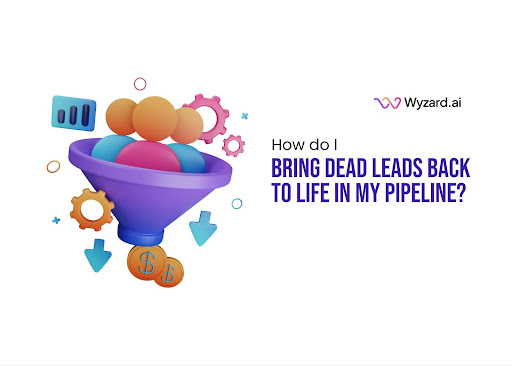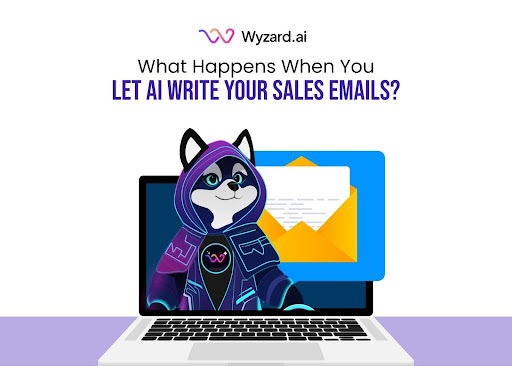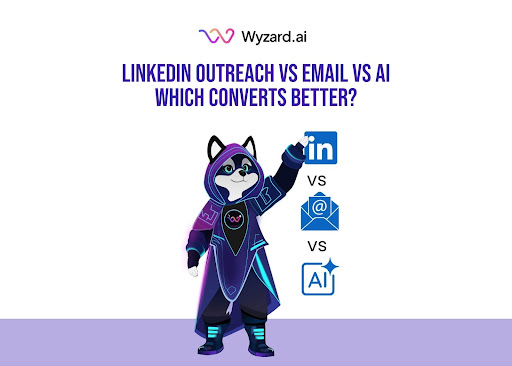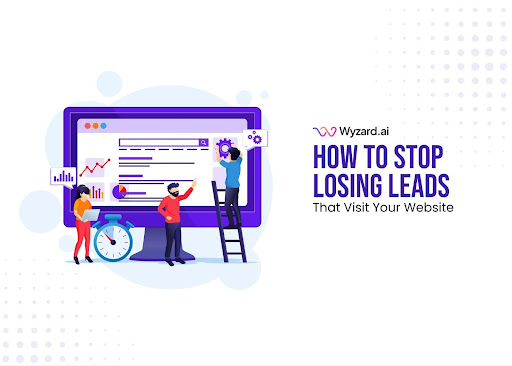Your sales team sends hundreds of emails weekly, but response rates keep dropping. You've heard about AI email writing ...

Subscribe Now
Your pipeline is filled with contacts who once showed interest but have since gone silent. These dormant prospects represent missed revenue opportunities sitting right under your nose. The frustrating part? You’ve already invested time and resources to attract them, yet they’ve slipped through the cracks before converting.
Dead leads aren’t truly dead until you’ve exhausted every strategic effort to revive them. The difference between successful GTM teams and struggling ones often comes down to how effectively they identify which cold leads deserve another shot and exactly when to reach out. Modern AI lead scoring systems have transformed this guessing game into a data-driven process that tells you precisely which leads to prioritize for re-engagement.
This guide walks through proven strategies to resurrect cold leads in your pipeline without wasting time on prospects who’ll never convert.
Why Do Leads Go Cold in Your Pipeline?
Understanding why prospects disengage helps you craft targeted revival strategies. Most leads go cold for surprisingly fixable reasons rather than permanent disqualification.
Timing misalignment tops the list. Your prospect showed genuine interest, but their company wasn’t ready to buy. Budget cycles, competing priorities, or organizational changes pushed your solution to the back burner. These leads remain valuable because the original problem you solved hasn’t disappeared; it’s just waiting for the right moment.
Poor follow-up cadence kills interest fast. When sales teams wait too long between touchpoints or bombard prospects with generic messages, engagement drops. Your lead might have needed two weeks to review your proposal, but you either vanished completely or sent five automated emails in three days. Both approaches create friction that drives prospects away.
Signal scatter causes massive lead leakage. When buyer intent signals live scattered across your website analytics, email platform, CRM, and chat tool, your team misses the exact moments when cold leads show renewed interest. A prospect who ghosted you three months ago might have just visited your pricing page twice this week, but if nobody’s watching those intent data signals, the opportunity vanishes again.
How AI Lead Scoring Helps Identify Which Dead Leads Deserve Revival
Not every cold lead deserves equal attention. AI lead scoring separates prospects worth pursuing from those who’ll never convert, saving your team from wasting cycles on dead ends.
Traditional lead scoring relies on manual point assignment and gut feelings about which behaviors matter most. This approach falls apart with dormant leads because their old engagement data doesn’t reflect current buying intent. An AI lead scoring system continuously analyzes behavioral patterns, firmographic changes, and real-time signals to identify which cold leads are showing renewed purchase intent.
The system spots patterns humans miss. When a lead who went cold six months ago suddenly has three employees visiting your site from new IP addresses, that’s a strong revival signal. When their company posts a job opening that matches the problem your product solves, the AI flags that lead for immediate outreach. These trigger events create natural re-engagement opportunities that feel timely rather than desperate.
Wyzard.ai’s signal intelligence catches these buying moments the instant they happen across all your channels. Instead of letting intent signals scatter across disconnected tools, the platform surfaces exactly which cold leads are warming up and what specific action triggered their renewed interest. This transforms your lead scoring from a static snapshot into a living system that tells you, “reach out to this person right now about this specific topic.”
What Your Lead Scoring Matrix Should Track for Dead Leads
A strong lead scoring matrix for dormant prospects looks different from how you score active leads. You need criteria that reveal re-engagement potential rather than initial fit.
| Lead Scoring Criteria | What It Reveals for Dead Leads | Weight in Revival Decisions |
| Recent site activity | Renewed product interest without sales contact | High |
| Company trigger events | New budget, leadership, or pain points | High |
| Time since last engagement | Whether enough time has passed for circumstances to change | Medium |
| Original disqualification reason | If the blocker still exists or has resolved | High |
| Engagement with re-engagement content | Interest in your new offerings or value props | High |
| Social media interactions | Passive interest or company news worth addressing | Medium |
| Team expansion in relevant departments | New decision-makers or budget allocation | High |
Your lead scoring system should automatically flag when multiple high-weight criteria align. When a cold lead’s company announces funding, their marketing team expands, and someone visits your case study page twice in one week, that combination screams “ready for outreach.”
The scoring matrix works best when it accounts for why the lead went cold originally. A prospect who ghosted because of budget constraints needs different tracking than someone who chose a competitor. Your criteria should help you segment dead leads into categories that inform your re-engagement approach.
When Should You Reach Out to Cold Leads Again?
Timing makes the difference between a welcomed re-connection and an annoying interruption. Reaching out too soon feels pushy; waiting too long means competitors beat you to revived prospects.
The right timing depends on why the lead went cold and what signals indicate readiness to re-engage. For leads who said “not right now,” a quarterly check-in aligned with typical budget cycles makes sense. For prospects who went silent without explanation, watch for trigger events like leadership changes, company growth, or renewed site activity before reaching out.
AI lead nurturing systems excel at identifying these precise moments. Rather than a calendar-based follow-up that ignores context, intelligent systems trigger outreach when specific conditions align. When a cold lead’s company posts a job opening that matches your solution’s use case, that’s your cue, not an arbitrary “60 days since last contact” rule.
Wyzard.ai’s Agentic Email monitors these signals continuously and initiates contact at exactly the right moment with context-aware messaging. Instead of generic “just checking in” emails that get ignored, your outreach references the specific trigger that prompted your message: their new VP of Sales, their recent expansion announcement, or their team’s repeat visits to your comparison pages.
The system ensures every message matches where your prospect is in their journey, timely, relevant, and ready to convert, rather than feeling like spam.
What Re-Engagement Tactics Work for Different Lead Scoring Criteria?
Your revival strategy should match why the lead went cold and what’s changed since then. Cookie-cutter re-engagement campaigns fail because they ignore the context that makes outreach relevant.
For budget-constrained leads showing new activity: Fresh financial signals like funding announcements or fiscal year starts create natural opportunities to revisit pricing conversations. Your outreach should acknowledge that timing wasn’t right before and highlight any new options (flexible payment terms, scaled-down packages) that address their previous objection. Skip the generic “still interested?” and instead reference their company’s recent growth or funding as the reason you’re reaching out.
For leads who chose competitors but are showing research behavior: When someone who picked a different solution starts visiting your comparison pages or feature documentation, they’re experiencing buyer’s remorse or hitting limitations. Don’t bash their current vendor. Instead, focus your message on specific capabilities they’re researching that suggest gaps in their current setup. Offer a genuine comparison call where you explore whether switching makes sense.
For leads who ghosted without explanation: These prospects need a completely fresh approach, not a continuation of your previous conversation. Lead nurturing tactics work better here than direct sales outreach. Share valuable content that addresses their likely challenges, engage with their social posts, or invite them to a relevant webinar without asking for anything. Rebuild the relationship before pushing for a meeting.
For leads in companies changing: New leadership, expansion into new markets, or team growth creates perfect re-engagement windows. Your message should connect their specific change to how your solution helps companies navigate similar transitions. This shows you’re paying attention to their business, not just cycling through your database sending bulk emails.
Multiple-channel engagement works better than email-only campaigns. Combine strategic email messages with social media engagement, useful content shares, and well-timed phone calls. The goal is a consistent, valuable presence, not aggressive selling.
How Does AI Lead Scoring Prevent Leads from Going Cold in the First Place?
The best dead lead revival strategy is preventing leads from dying in the first place. Proactive signal capture and instant response stop prospects from slipping away during those critical high-intent moments.
Traditional lead management creates gaps where interest cools. A prospect visits your pricing page at 9 PM on Friday, but your sales team doesn’t see that signal until Monday morning. By then, they’ve checked out your competitors, and their buying urgency has faded. Every delayed response to a high-intent action increases the odds that the lead goes cold.
AI lead scoring systems that integrate with real-time engagement tools close these gaps. When a prospect shows strong buying intent through their behavior, pricing page visits, feature comparison research, and case study downloads, the system should trigger an immediate, relevant response. Not a generic autoresponder, but contextual engagement that addresses exactly what they were researching.
Wyzard, the Signal-to-Revenue AI, captures these buyer signals instantly across your site, email, and other channels, then orchestrates the right response through Agentic Chat, Agentic Email, or Agentic InMail. When someone shows high purchase intent at midnight, they get an intelligent, personalized response right then, not a “our office hours are 9-5” message. This immediate, context-aware engagement keeps warm leads from cooling off.
The platform connects with your existing tools through seamless integrations, so signals don’t scatter across disconnected systems. Everything your prospect does feeds into one unified view that helps your team act on interest before it fades. This orchestration across channels ensures no buying moment gets missed because the signal lives in the wrong tool.
What Makes the Difference Between Revival Success and Wasted Effort?
Your lead scoring criteria ultimately determine whether your revival efforts produce revenue or just create busywork. The difference comes down to pursuing leads based on current buying signals rather than past interest.
Too many teams revive dead leads using the same approach that failed the first time. They send similar messaging, use the same channels, and wonder why cold prospects stay cold. Effective revival requires treating these leads as entirely new opportunities with fresh context about what’s changed in their business and what renewed their interest.
Focus your energy on leads showing multiple concurrent signals: recent activity, company changes, and engagement with your content or brand. When your lead scoring system surfaces prospects meeting these criteria, they deserve immediate, personalized attention. Everyone else can stay in low-effort nurture sequences until stronger signals emerge.
The goal isn’t to revive every dead lead; it’s to identify and prioritize the ones actually ready to buy now. Wyzard, the Signal-to-Revenue AI, helps GTM teams capture every buying signal, prioritize which cold leads to pursue, and engage them at exactly the right moment with relevant messaging. This signal-to-revenue approach transforms dead lead revival from a desperate last resort into a strategic revenue channel that consistently converts dormant prospects into customers.
FAQs
1. How does Wyzard.ai help bring dead leads back to life?
Wyzard.ai captures buyer signals the moment cold leads show renewed interest across your website, email, and other channels. The platform triggers immediate, context-aware outreach through Agentic Email and Agentic Chat when dormant prospects visit pricing pages, download resources, or show other high-intent behaviors.
2. What’s the difference between AI lead scoring and manual scoring for dead leads?
Manual lead scoring relies on outdated engagement data and gut feelings about which cold leads to pursue. AI lead scoring continuously analyzes real-time behavioral patterns, company changes, and intent signals to identify exactly which dormant leads are showing current buying interest worth your team’s attention.
3. Can Wyzard.ai tell me why a lead went cold originally?
Yes, Wyzard, the Signal-to-Revenue AI, tracks the complete engagement history and identifies patterns in how leads disengage. The platform helps you segment cold leads based on their original drop-off reason, budget constraints, timing issues, or competitor selection, so you can tailor your revival approach to address their specific objections.
4. When should I stop trying to revive a dead lead?
Stop pursuing cold leads who show zero engagement signals after multiple re-engagement attempts across different channels and trigger events. Focus your energy on dormant prospects showing recent activity, company changes, or renewed research behavior; these leads deserve immediate attention, while truly dead leads can stay in low-effort nurture sequences.
5. How does Wyzard.ai prevent leads from going cold in the first place?
Wyzard.ai captures high-intent buyer signals instantly and orchestrates immediate response through Agentic Chat, Email, or InMail, even at midnight on weekends. This real-time engagement keeps warm leads from cooling off during those critical moments when a delayed response would normally cause prospects to check out competitors instead.
Other blogs
The latest industry news, interviews, technologies, and resources.
LinkedIn Outreach vs Email vs AI: Which Converts Better?
Your sales team sends hundreds of messages each week. LinkedIn connections go unanswered. Cold emails land in spam folders. ...

How to Stop Losing Leads That Visit Your Website
You've invested in driving traffic to your website. Visitors are arriving, but they're leaving without converting. If you're watching ...

 We’ve secured funding to power Signal-to-Revenue AI to GTM teams globally. →
We’ve secured funding to power Signal-to-Revenue AI to GTM teams globally. →



